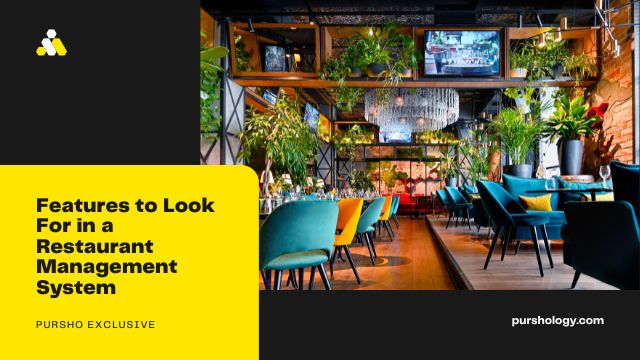The most comprehensive restaurant management system (RMS) will include features such as core POS, inventory control, CRM, staff management, menu management, order and payment management, and technical support and reporting. It will also support multiple operating systems and devices, which will enable it to be used on multiple devices. There are some key differences between the RMS and the POS, which is why you should research each of these features before making a final decision.
Reporting
A restaurant management system is designed to enable accurate reporting. This information allows users to make data-driven decisions regarding their operations. It also enables access to reports from anywhere, on any device. With the right software, you can control your operations remotely. You can analyze sales data and identify repeat customers. Moreover, the software offers CRM features that will capture customer details. This feature will give you a complete overview of your restaurant’s sales and customer base.
If you have multiple locations, you can set up your restaurant’s POS software to allow you to access reports from anywhere. Reporting in restaurant management system will help you determine which menu items are the most profitable. You can monitor the sales and profitability of each item in your menu and optimize your business processes. Besides, it will help you make strategic decisions, reduce costs, and increase revenue. Besides, it will enable you to analyze the performance of your staff and improve customer service.
Analytics
The benefits of using analytics in a restaurant management system are many. This type of software allows operators to see how each location compares to the others and optimize their menu, scheduling, and operating hours. It can also help restaurant managers determine when to close a location or add another. It can also provide a single source of truth for their business, allowing for faster decision-making. To get started, consider what your restaurant’s goals are.
The type of data you can gather from your restaurant management system depends on the type of data you’re looking to analyze. This data can include a variety of metrics, such as sales volume, average ticket size, time of day transactions, number of items per transaction, and more. Other types of data that can be gathered through analytics are demographics, footfall, WiFi connections, turnstyle, and competitor data. You can even combine multiple data streams to create a comprehensive report for your business.
Table management
One of the best ways to streamline restaurant operations is by implementing table-management software. These solutions help restaurants track their reservations and show their customers how far their meal is along. A restaurant management system can also provide information to staff about the time it takes to seat a customer. In many cases, the system can even display the current status of the customer’s table. Table management software can help streamline restaurant operations by making the entire process faster and more convenient.
Moreover, the data can be used to improve table management. For example, you can use this data to determine when a table is scheduled to turn. It is possible to prioritize the tables of returning customers and seat them in a section with a server who can accommodate their needs. Using this data to plan for table turn times can help you enhance your customer experience and keep your restaurant’s operation running smoothly. The next step is to determine the table size.
Order management
A well-designed order management system will save a restaurant’s time and money, and help prevent overstocking. It also allows restaurateurs to more easily plan their menus and monitor spending. Restaurants typically have several suppliers, so keeping track of all of the inventory is difficult. Additionally, ordering supplies at the last minute can be tricky. Order management software can make this task easier. With a restaurant management system, ordering supplies becomes a breeze and enables restaurateurs to stay on budget.
Using order management software can be useful for both small and large restaurants. Orders from large chains are easier to manage than those of small restaurants. They can negotiate strategic long-term vendor contracts, which means they can keep their inventory levels at a reasonable level. Smaller restaurants, however, have a greater challenge when it comes to inventory management. Both under and over-stocking can cause food wastage and hurt cash flow. It’s important to strike a balance. Order management software is essential to ensuring that orders are filled promptly.
Customizable menus
A restaurant management software is an invaluable tool in streamlining operations, especially when it comes to creating and maintaining customized menus. A good menu management system can organize dishes, beverages, and takeout orders and sync these changes to the in-venue and online ordering menus. It can also be helpful in upselling items, with color-coded menus and high-quality images. By following the rules, menu items can be made more appealing to customers and help drive up sales.
The introduction of new ordering channels has resulted in an explosion of menu types. The single biggest challenge faced by enterprise restaurant operators is menu management. Trying to manage menus across order channels can be a technological nightmare, resulting in inaccurate orders and a disjointed brand experience. Moreover, menu management mayhem can lead to an inefficient use of restaurant resources. However, a restaurant management software solution can eliminate this dilemma.
Payment integration
If you want to increase the efficiency of your cash flow and improve customer service, you should consider payment integration into your restaurant management system. Payment integration into a POS system makes it easier to process credit cards, while also speeding up the checkout process. The payment processing system acts as a comprehensive customer database, tracking all transactions. This information can be used to improve customer service, suggest selling items, and target marketing campaigns. This information also helps you keep track of important sales trends.
Regardless of what your business requires, there are plenty of integrated applications that can help you succeed. An excellent restaurant management system will integrate with other applications, allowing you to transfer data seamlessly. Some cloud-based solutions even offer customization for integration needs. Regardless of the type of restaurant management system you choose, you need basic integration with your POS system, CRM, and revenue management. Listed below are some of the benefits of payment integration into a restaurant management system.




